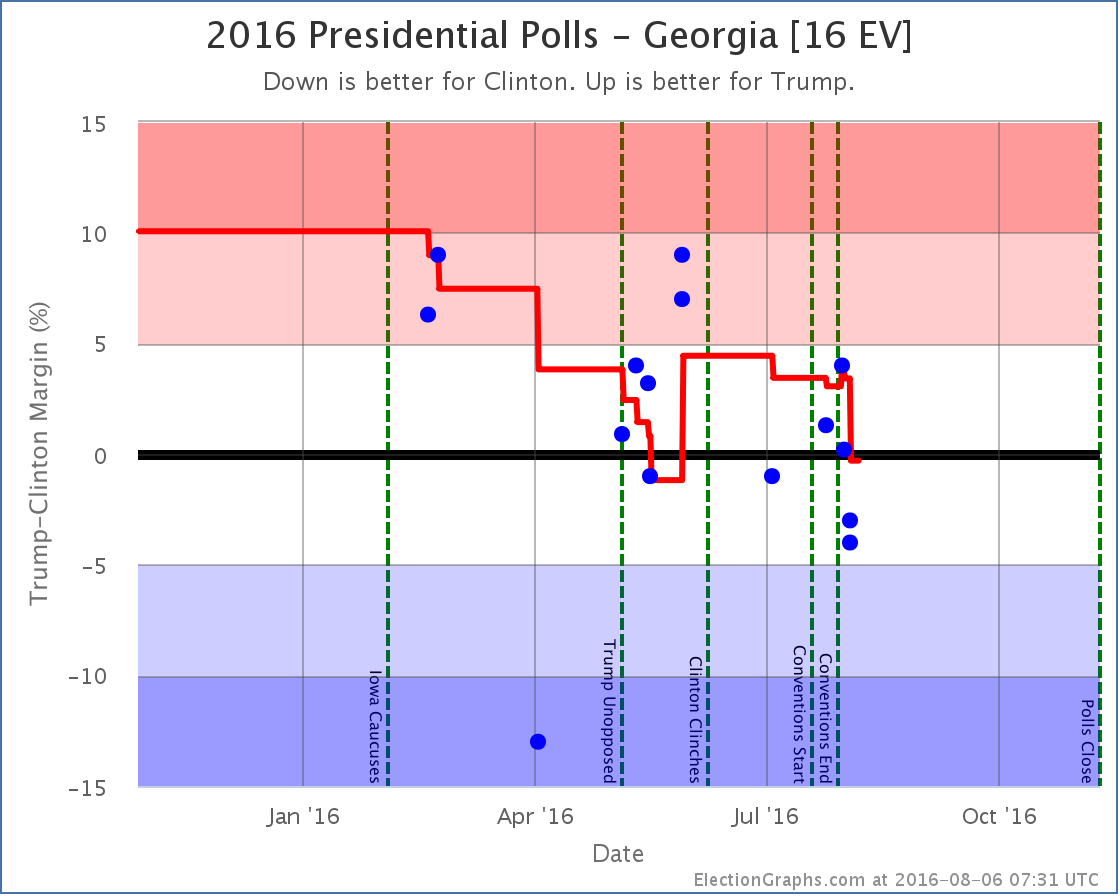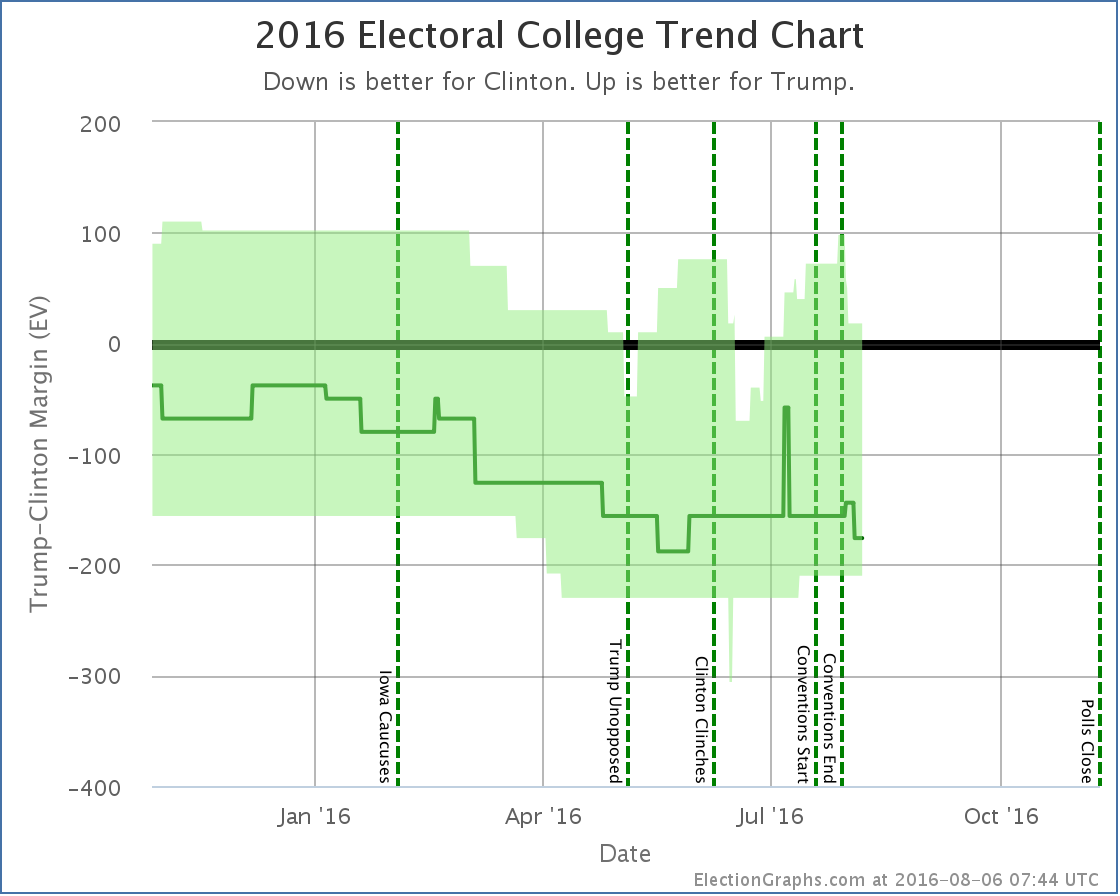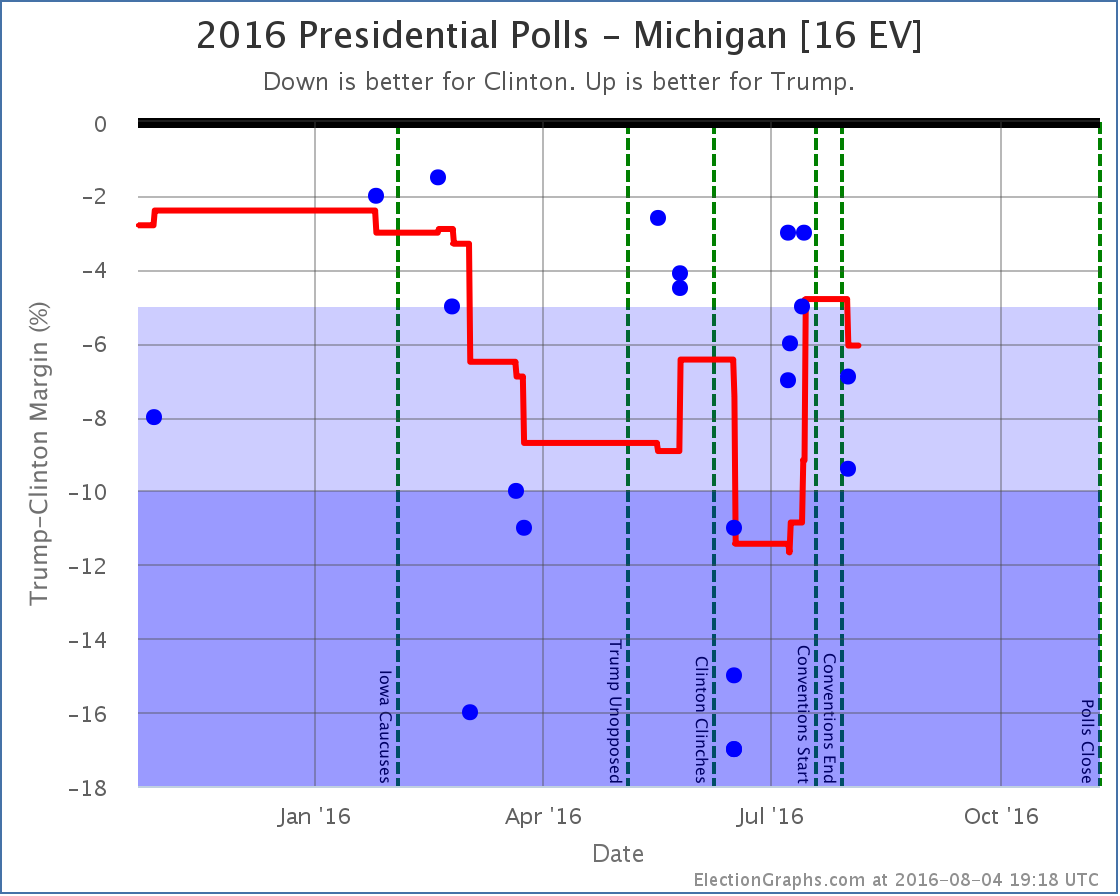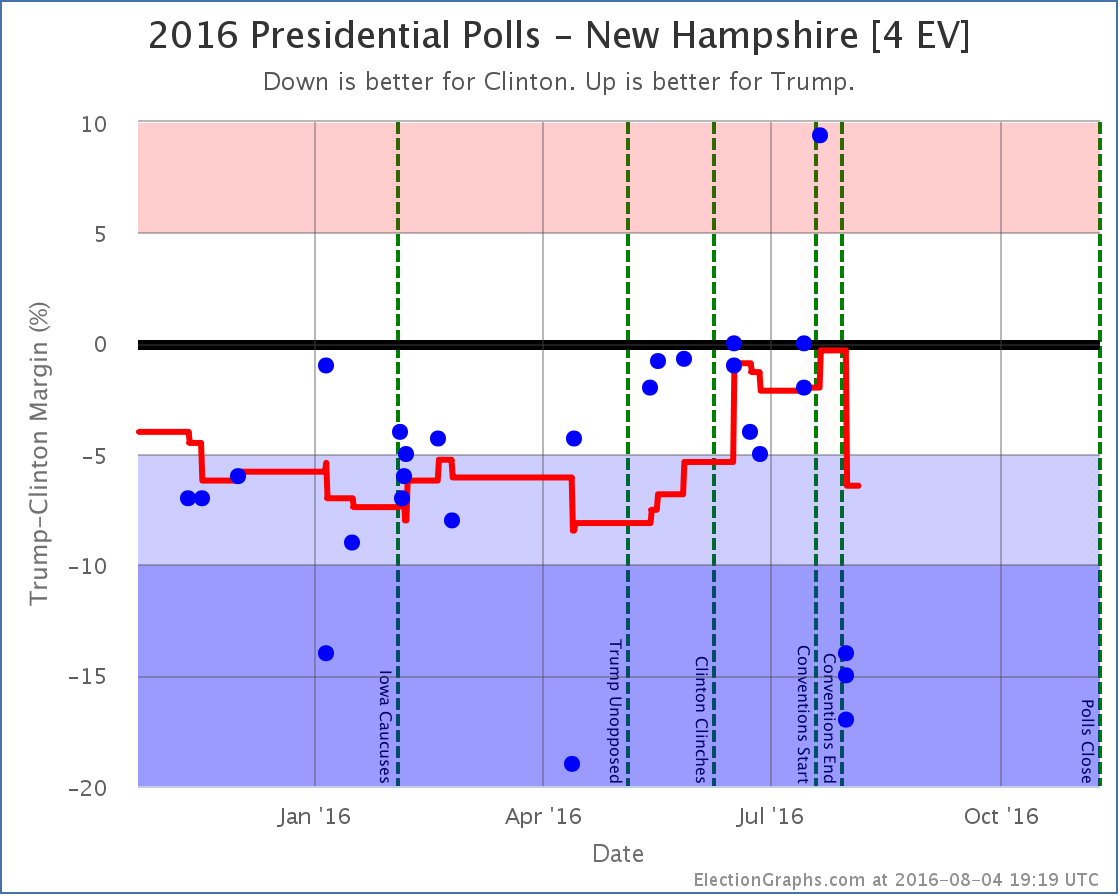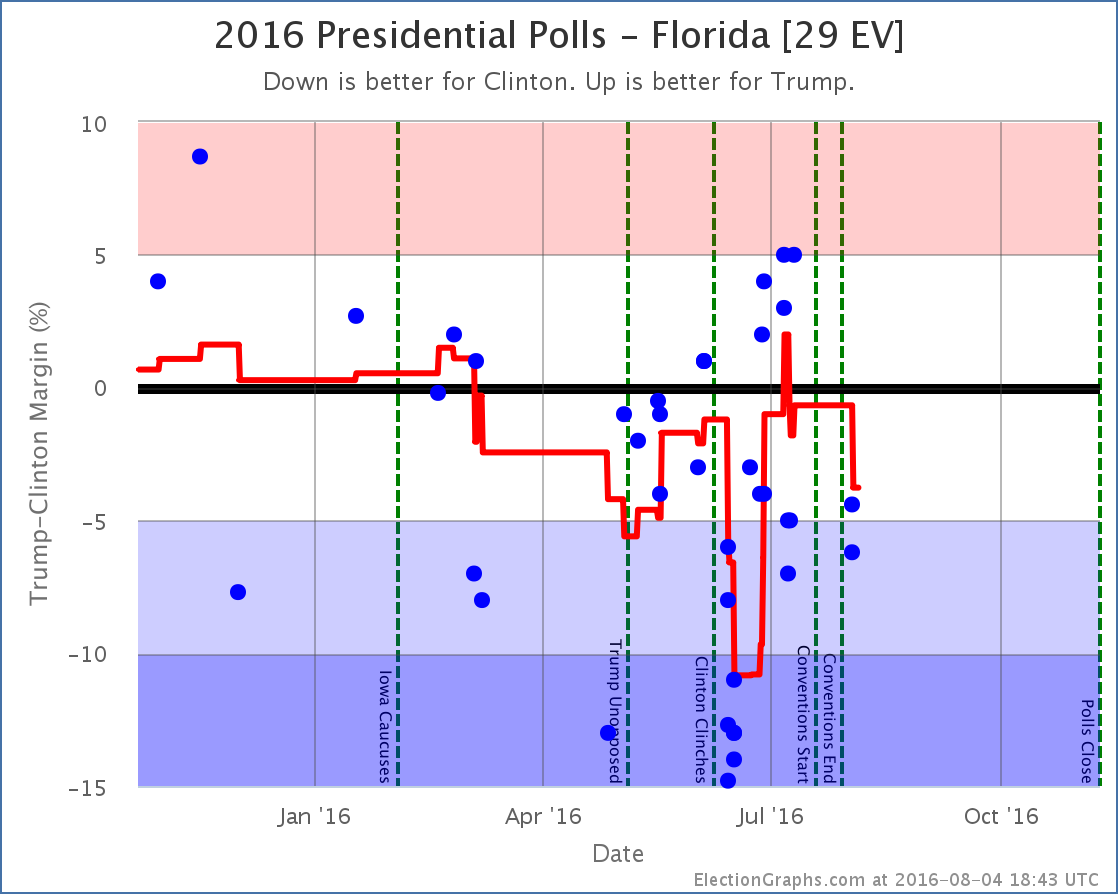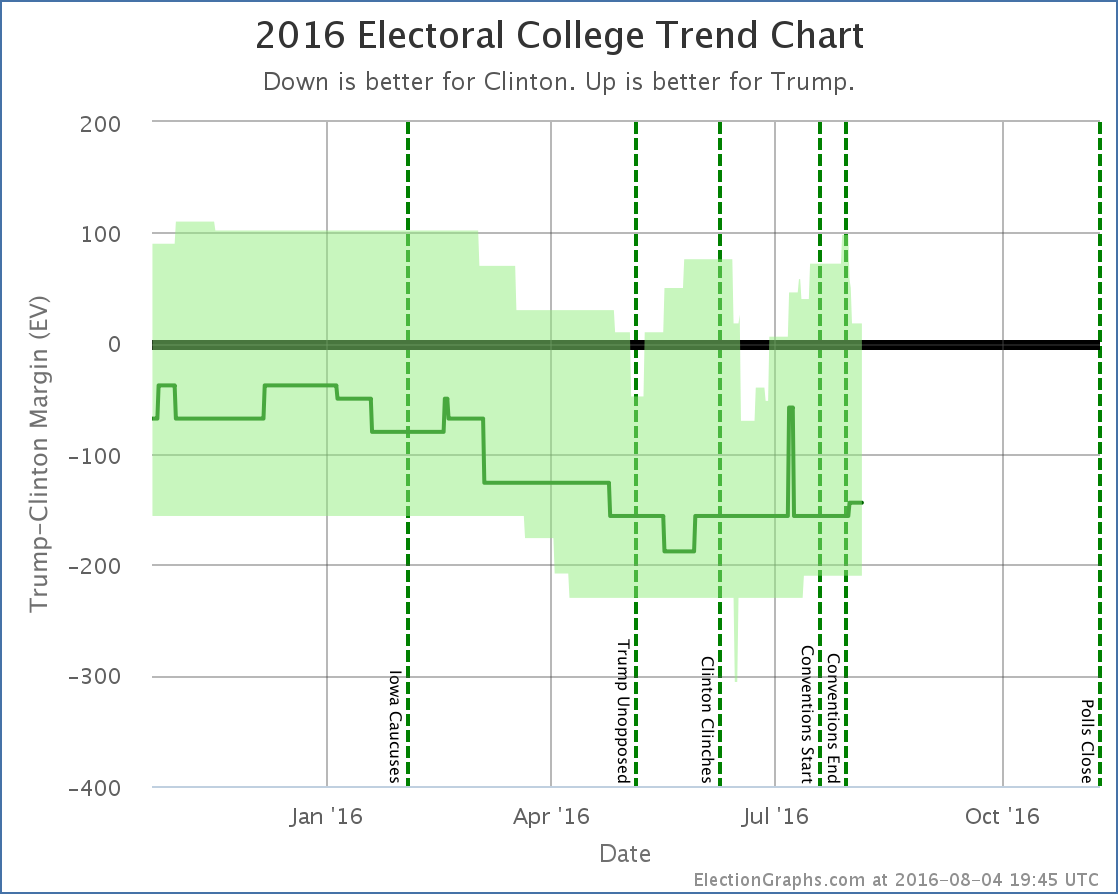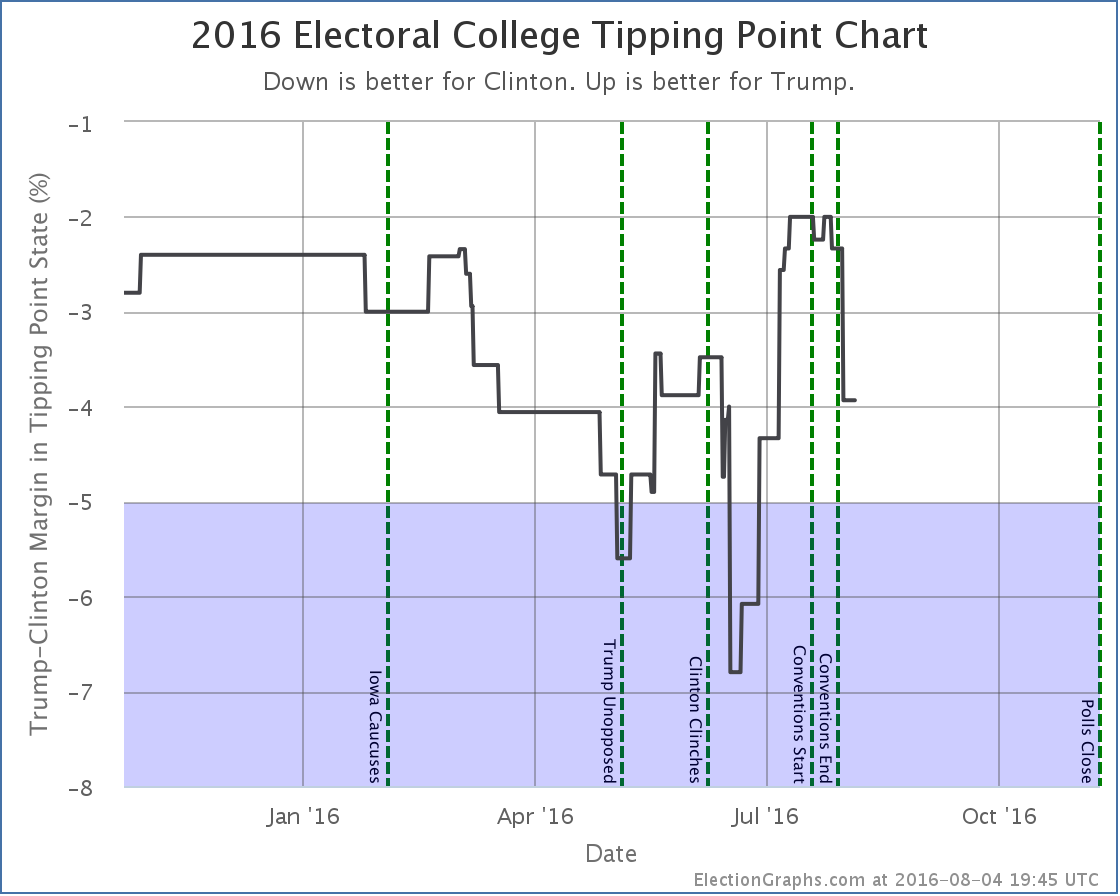- 00:33:22 Retweeted @johncbussey 00:28:49 Trump's endorsement of Ryan, McCain, and Ayotte greeted at rally with mild applause. Audience wants the other Trump.
- 01:38:02 Retweeted @joshtpm 01:10:08 1: Trump doesn't bow down. Actually he does, sometimes. But he says he never bows down. So what just happened? After crapping on Ryan …
- 01:38:06 Retweeted @joshtpm 01:11:15 2: and McCain for days, taunting, trying to alpha them, he completely gave in. Who talked to him? What did they tell him? Serious … in reply to joshtpm
- 01:38:12 Retweeted @joshtpm 01:12:01 3: question. The answer will tell us a lot about what's going on inside the campaign. We also know he must now be under a lot of psychic… in reply to joshtpm
- 01:38:15 Retweeted @joshtpm 01:12:27 4: pressure because being dominated like that is the hardest thing for him. in reply to joshtpm
- 01:38:20 Retweeted @joshtpm 01:15:06 Friend suggest RNC/Priebus threatened to pull staff/money. Thats fatal for Trump since he still has zero campaign apparatus.Seems plausible.
- 01:43:08 Retweeted @kaburke9 01:42:31 @abulsme I love this article so much. in reply to abulsme
- 01:53:34 Retweeted @JesseFFerguson 2016-08-05 22:08:55 Stop. Put down what you're doing. Watch this video summarizing The Week of Trump. https://t.co/JuJyNTNLau
- 01:53:46 Retweeted @PaulBegala 2016-08-05 22:15:13 Wow. I can't wait for next week. https://t.co/NxEmdQ8Kh8
- 03:06:37 Retweeted @TheMattWilstein 01:55:45 But does sarcastically reading off a piece of paper even count as an endorsement? https://t.co/QpFhRMNguH https://t.co/VRsowud6qD
- 03:27:02 Retweeted @ananavarro 03:14:30 In last 24 hrs, Trump 1) admitted he made crap up re seeing plane w/$ for Iran; 2) endorsed McCain, Ayotte, Ryan. Must be back on his meds.
- 07:00:23 Retweeted @DanKaszeta 2016-08-01 13:11:06 Reality TV idea: We build a fake White House and put Trump in it and tell him he's president. Film the whole thing.
- 07:23:16 Retweeted @KevinMKruse 02:02:15 This. Is. Amazing.
When he gets to Ayotte's name, you can tell he hadn't even read the script before he started. https://t.co/8QUw6CBTUM
- 18:38:23 [Blog Post] Electoral College: Blue Georgia? https://t.co/K2VAuStykG
- 20:37:34 Retweeted @fmanjoo 20:13:32 Next week: Polls are gonna slightly tighten and Trump will do fewer gaffes and the Twitter narrative will be HRC has ruined a sure thing
- 21:59:26 Retweeted @VDOOZER 2016-08-05 14:29:41 "I'm tired of being politically correct" now seems to mean "I want to be allowed to be racist out loud instead of just in my head".
- 22:02:25 Reading – Trump is right: He didn’t kick a baby out of a campaign rally (Glenn Kessler) https://t.co/2I9zUNJVMK
- 22:07:10 Reading – Apple should stop selling four-year-old computers (Sam Byford) https://t.co/kqQp1cAcwn
|
States with new poll data since the last update: Georgia, Michigan The string of bad news for Trump continues. This time out of Georgia: Georgia has looked like a swing state ever since there were enough Clinton vs Trump polls to draw any real conclusions. It has consistently looked close. There was even a brief time in May where Clinton led in Georgia.* With the latest results in Georgia, Clinton once again leads… but the polls in the average range from Clinton +4.0% to Trump +4.0%. The average itself is very close. Clinton only leads by 0.3%. The only real conclusion here right now is that Georgia could go either way. Which is remarkable, since this is Georgia. Georgia hasn’t gone blue since Bill Clinton won there in 1992. Clinton’s very narrow lead here may well disappear with the very next poll, but for the moment, she is slightly ahead, so Georgia goes into her column. If each candidate wins each of the states they are ahead in, Clinton now wins 357 to 181, a 176 electoral vote margin. This doesn’t yet match her high in May of a 188 electoral vote win in the expected case, but it is getting close. With talk of a massive Trump loss once again dominating the chatter about the election, keep in mind that a 176 electoral vote margin still places Trump in the zone where he is doing worse than Romney (126 EV loss) but better than McCain (192 EV loss). Trump is losing, but it is the same sort of loss as the last couple of Republican candidates, not something of historic proportions. At least not at the moment. Of course, there are 94.2 days until the polls close. That is plenty of time for things to change. A lot. It could get worse for Trump… or it could get better. It may well be that the latest drops are part of a Clinton convention bounce and not permanent damage for Trump. We’ll know better in a few weeks. * This was not noted at the time because the poll that pushed Clinton over the edge wasn’t found and added until after the state had popped back to Trump. Note: This post is an update based on the data on ElectionGraphs.com. Election Graphs tracks both a poll based estimate of the Electoral College and a numbers based look at the Delegate Races. All of the charts and graphs seen in this post are from that site. Additional graphs, charts and raw data can be found there. Follow @ElectionGraphs on Twitter or like Election Graphs on Facebook to see announcements of updates or to join the conversation. For those interested in individual general election poll updates, follow @ElecCollPolls on Twitter for all the polls as they are added. If you find the information in these posts interesting or useful, please consider visiting the tip jar.
On this week’s Curmudgeon’s Corner podcast most of the show is on all the crazy Trump news from the last week. There was a lot. Battles with Khan, complaints about debates and voter fraud, the baby incident, the non-endorsements… and much much more. Sam and Ivan cover all of it. But first they cover some of the other events in the world… Libya, Zika, Clinton’s email… and they celebrate a milestone for the show! Click below to listen or subscribe… then let us know your own thoughts! Length this week – 1:52:18
Show Details:
Note: Timestamps are accurate, but many audio players are not very precise on the timestamps they show, especially when scanning forwards and backwards, so depending on your player, if you scan to a specific time, you may not get exactly what is shown above and may have to scan back or forward a bit to get what is expected.
The Curmudgeon’s Corner theme music is generously provided by Ray Lynch. Our intro is “The Oh of Pleasure” (Amazon MP3 link) Our outro is “Celestial Soda Pop” (Amazon MP3 link) Both are from the album “Deep Breakfast” (iTunes link) Please buy his music! States with new poll data since the last update: Tennessee, Arizona, Florida, Pennsylvania, Michigan, New Hampshire, North Carolina, Kentucky. It looks like Trump’s last couple of bad weeks are starting to hit the state poll averages. In this update, we have model changes caused by the movement in three states. All three changes favor Clinton. Going through them one by one… Michigan [16 EV] First of all, I will point out a new feature on these charts. There are now vertical dotted lines marking significant campaign events. Right now that is the Iowa caucuses, when the candidates won their primaries and the conventions. When/if debates happen, they will get marked as well. This is helpful in understanding the moves vs what may be going on in the campaign. In Michigan specifically, you can see that Trump was gaining on Clinton in the run up to the conventions. The average popped up into the “close state” zone right before the conventions started. But with the first post-convention polls, Clinton’s lead increases again. She now has a 6.1% lead in Michigan, and the state is no longer included in Trump’s “best case”. New Hampshire [4 EV] A poll taken during the Republican convention was the best result Trump has ever gotten in New Hampshire. This had moved the average to an very narrow 0.3% Clinton lead. The first results from after the Democratic convention on the other hand are some of the worst results Trump has seen in New Hampshire, and Clinton’s lead rises to 6.4%. So, like Michigan, New Hampshire is no longer looking like a possible Trump pick up. Since New Hampshire also moved past the tipping point, the tipping point also moved. Now, both the Trump result during the Republican convention, and these new results look like outliers. Every other poll since May has been between a tie and Clinton +5%. So polls showing Trump up by 9.4%, or polls showing Clinton up by 17% should all be taken with a massive grain of salt. Given national trends some swing toward Clinton is expected, but we need to see more polls before concluding that the swing toward Clinton in New Hampshire is quite as large as the new polling indicates.* This is of course why we only look at averages rather than individual polls. The average moved quite a bit, but it doesn’t instantly snap to these new results. But it still moves enough to make a difference. Florida [27 EV] The first post-convention results in Florida move the average toward Clinton. Florida goes from a 0.7% Clinton lead to a 3.8% Clinton lead. No category change here. Florida is still weak Clinton, but since the average passes the tipping point, the tipping point gets shifted. National View With each of the three states that caused changes out of the way, time to look at the national picture. First the “bubble” showing the best and expected cases over time: Right before the Democratic convention ended, Trump’s best case was up to winning by 98 electoral votes. Since then Pennsylvania, Michigan, and New Hampshire have slipped out of reach. His best case is now down to winning by only 18 electoral votes. He is one bad poll in Virginia, Florida, or North Carolina away from once again having his best case be a loss. And with the movements in Florida and New Hampshire the tipping point moves dramatically as well: The tipping point margin… that is the margin in the state that would put the candidate “over the top” if you order the states by how strongly they support the candidates, moves from Clinton by 2.3% in North Carolina to Clinton by 3.9% in Virginia. Before the conventions, Trump had dramatically improved his position in the tipping point. He was still losing, but by much less than before. He has now given up about 40% of the margin he gained. A 3.9% tipping point margin… which is basically equivalent to the national popular vote margin, but adjusted for the structure of the electoral college… is still a close race. But not as close as it was before the conventions… and there are many close states that have not yet had post-convention polls. Given where national polling is right now, once we do get more state polls, it would not be surprising to see Trump continue to drop in the short term. 95.7 days until the first polls start to close on election day. * For the wonkiest of you out there: All three results showing Clinton up by double digits were from the same underlying WBUR poll sliced in different ways, so were not actually fully independent samples, so they don’t count as additional confirmation. This election cycle when I have a single poll that reports multiple results… just 2 candidates along side with 4 candidates, or registered voters and likely voters, or first response vs pushing leaners, I’m including ALL of the results rather than having some set of rules for picking only one. There are strong arguments for NOT doing this, specifically what I just mentioned about the results not being truly independent of each other, so you essentially end up giving more weight than you would otherwise to that pollster, simply because they reported their results in several different ways. I am simply defaulting to including everything on the theory that being more complete is better. I do understand the downsides though. I may decide to handle this a different way in 2020, but this is how it is for 2016. :-) Note: This post is an update based on the data on ElectionGraphs.com. Election Graphs tracks both a poll based estimate of the Electoral College and a numbers based look at the Delegate Races. All of the charts and graphs seen in this post are from that site. Additional graphs, charts and raw data can be found there. Follow @ElectionGraphs on Twitter or like Election Graphs on Facebook to see announcements of updates or to join the conversation. For those interested in individual general election poll updates, follow @ElecCollPolls on Twitter for all the polls as they are added. If you find the information in these posts interesting or useful, please consider visiting the tip jar.
|
||
